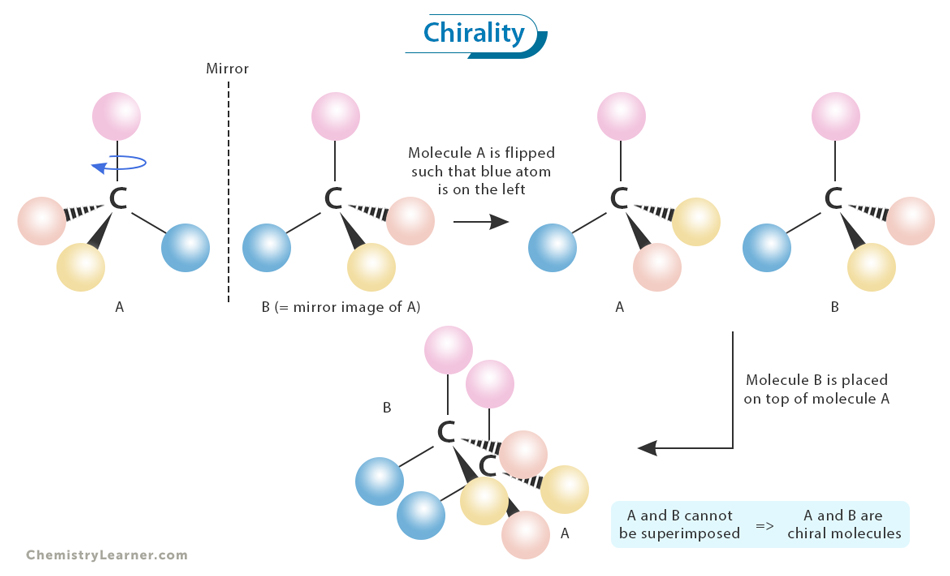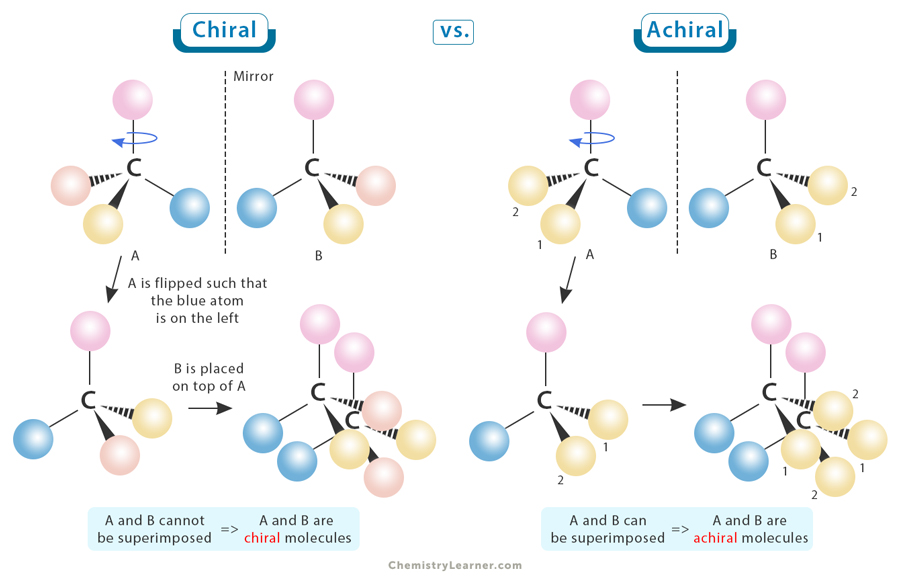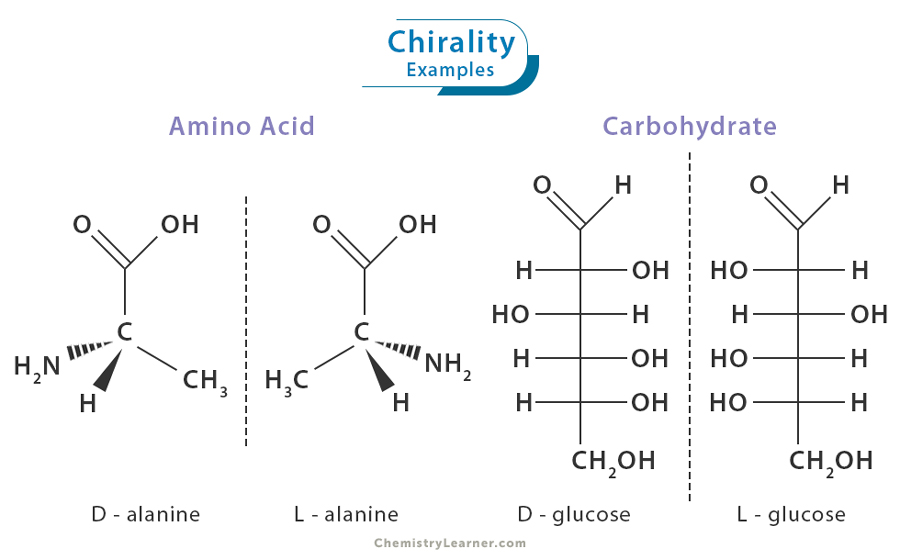Chirality
Chirality is a concept that deals with the asymmetry or handedness of objects or molecules. The term is derived from the Greek word “kheir,” meaning hand. Chirality refers to the fact that certain objects or molecules cannot be superimposed onto their mirror images. A molecule is said to be chiral if distinguishable from its mirror image; that is, it cannot be superimposed onto it. Understanding how chiral molecules interact with one another and their surroundings is crucial [1-4].
Chiral vs. Achiral
A fundamental principle of chirality is understanding the difference between chiral and achiral objects [1-6].
Achiral objects possess a plane of symmetry or internal symmetry, allowing them to be superimposed onto their mirror images. In other words, achiral objects lack handedness and are identical to their mirror images. Our face exhibits achirality, meaning it lacks chirality, as it can be closely aligned with its mirror image, with only minor deviations. The face possesses a plane of symmetry, with the left side mirroring the right side. Common examples of achiral objects include spheres, cubes, and many simple organic molecules like methane (CH4) and ethane (C2H6).
On the contrary, chiral objects lack this internal symmetry and cannot be superimposed onto their mirror images. This characteristic is a fundamental property of chirality. Our hands exhibit chirality; they lack a mirror-like symmetry plane. It is impossible to align the left hand perfectly with the right. No plane exists that divides the hand in a manner where one side mirrors the other. Similarly, a right-handed glove, also a chiral object, will not accommodate the left hand.
Chiral Centers
At the core of chirality lies “Chiral Center,” a concept that plays a pivotal role in the behavior of molecules and their interactions with the world around them. A chiral center, also known as a stereocenter or chiral atom, is a specific atom within a molecule that lacks superimposable mirror images. A chiral center in a molecule typically leads to the molecule’s chirality [1-6].
This chirality gives rise to enantiomers, which are non-superimposable mirror-image forms of a molecule. Imagine a molecule as a three-dimensional puzzle piece and the chiral center as the point where the piece can be rotated or flipped but never aligned perfectly with its mirror image.
Chiral centers are denoted using the R/S system, which assigns a configuration to each based on the priority of substituents. This designation system helps chemists distinguish between enantiomers and allows for precise communication about a molecule’s three-dimensional structure. Understanding the presence and significance of chiral centers is an essential aspect of modern chemistry, especially in pharmaceutical research and development.
Examples of Chiral Molecules
Let us explore a few examples of chirality in chemistry to illustrate its significance [1].
1. Amino Acids
Amino acids, the building blocks of proteins, provide one of the most prominent examples of chirality. In nature, amino acids exist predominantly in their L-form (levo-rotatory), which means they are left-handed. The right-handed D-amino acids are relatively rare in biological systems. L-amino acids and D-amino acids are mirror-image enantiomers of each other. They have the same chemical formula and functional groups but differ in their spatial arrangement of atoms. This subtle difference can have profound implications for biological processes and drug interactions, as the human body often exhibits specificity for one enantiomer over the other.
2. Carbohydrates
Carbohydrates, including sugars, are another group of compounds where chirality is prevalent. Common sugars like glucose and fructose are chiral molecules with multiple chiral centers. The arrangement of these chiral centers determines the overall chirality of the sugar molecule. Interestingly, sugars’ sweetness and biological activity often depend on their specific chiral configuration. For example, D-glucose is the primary sugar used by living organisms for energy. At the same time, its enantiomer, L-glucose, is less common and not metabolized similarly.







